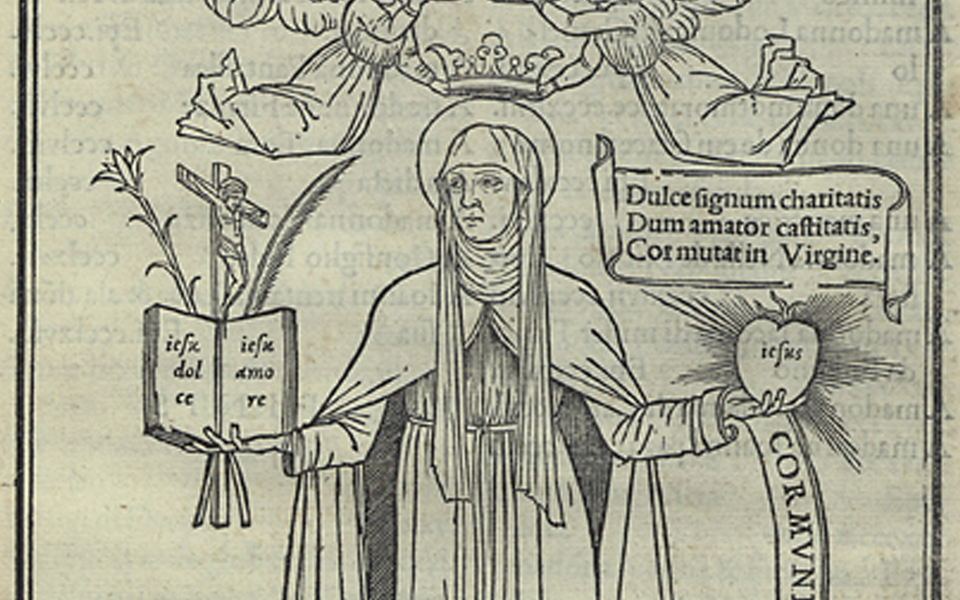
In September 1500, in Venice, the printing house of Aldo Manuzio produced a book containing the correspondence of Catherine of Siena, the canonized Dominican nun, later to be considered as a Doctor of the Church. The book includes an engraving representing the saint in one idealized experience of ecstasy of her mystical marriage with Jesus, exchanging with him her heart.
It could be a book, a simple illustrated book, like so many others printed in that Italian city. However, the engraving presents three written sentences - “iesu dolce, iesu amore, iesu” –in typographical characters different from all others that had been used or experimented before: a letter slightly tilted to the right, umductus, designed by Aldo Manuzio and made open by the engraver Francesco Grifo, which helped to express and highlight the ecstasy felt by the saint. A new type that soon began to spread throughout the world and that is known today as italic, a new form of letter that, in the middle of an extensive text, highlights and calls the attention of the reader.
In the occasion of the fifth centenary of Aldo Manuzio’s death (c.1450-1515), the man who helped transform printing in art, the Biblioteca Nacional de Portugal and the Universidade Nova de Lisboa – through the Centro de Estudos Históricos (CEH) and the Centro de História d’Aquém e d’Além Mar (CHAM)- joined together to celebrate the event, organizing an exhibition of works that came out from Aldo’s venetian printing house, chosen from the collections of BNP, and conveying a seminar which will evoke not just the printer and humanist but also the “itálico” as one of humanity’s greatest legacies.
Organization Comittee
João Alves Dias (CHAM)
Organised by
CHAM / NOVA FCSH | UAc
BNP
CEH
Mais Informações (.pdf)
Mais informações | For more information (Web)







